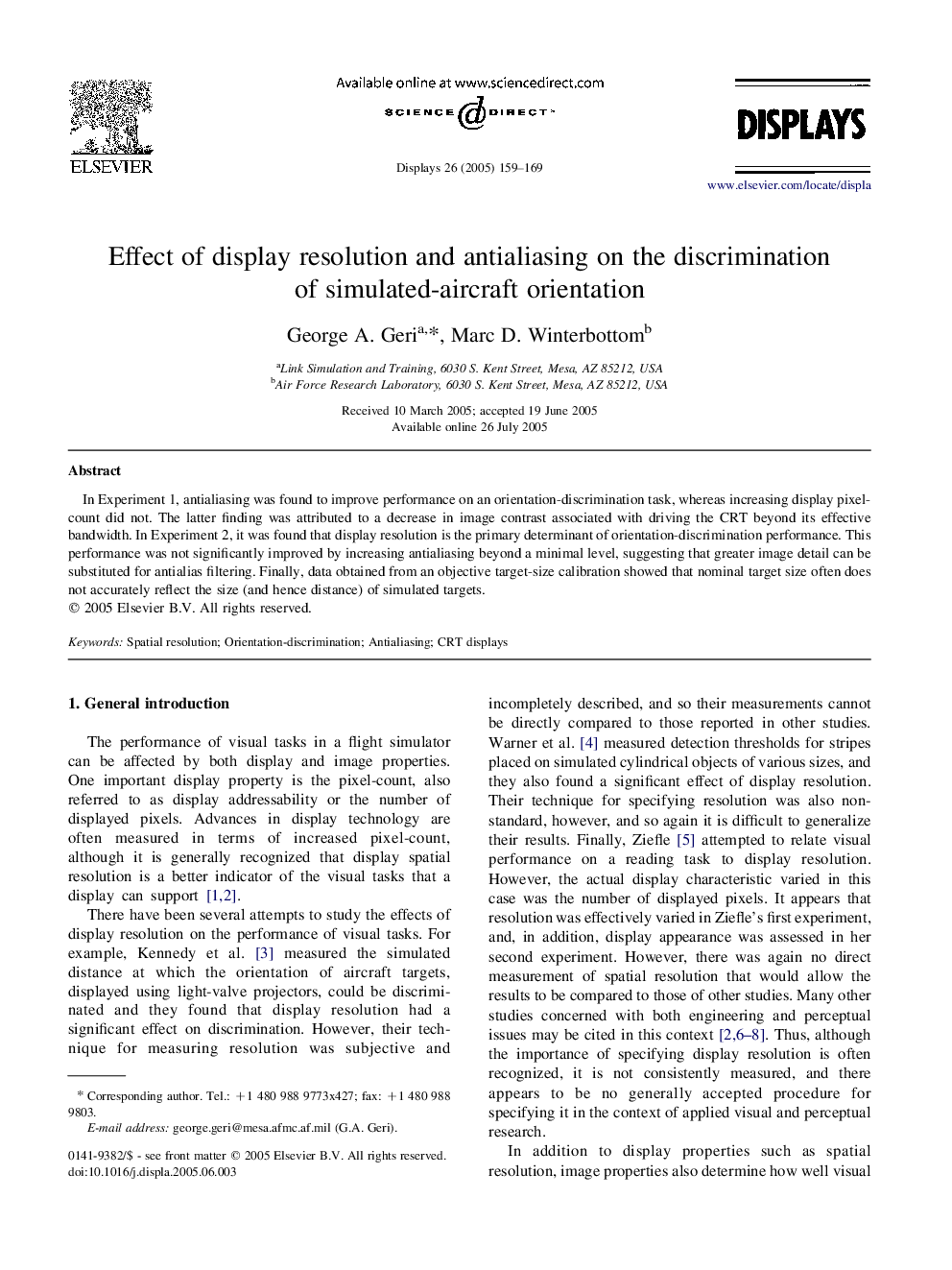| Article ID | Journal | Published Year | Pages | File Type |
|---|---|---|---|---|
| 9670213 | Displays | 2005 | 11 Pages |
Abstract
In Experiment 1, antialiasing was found to improve performance on an orientation-discrimination task, whereas increasing display pixel-count did not. The latter finding was attributed to a decrease in image contrast associated with driving the CRT beyond its effective bandwidth. In Experiment 2, it was found that display resolution is the primary determinant of orientation-discrimination performance. This performance was not significantly improved by increasing antialiasing beyond a minimal level, suggesting that greater image detail can be substituted for antialias filtering. Finally, data obtained from an objective target-size calibration showed that nominal target size often does not accurately reflect the size (and hence distance) of simulated targets.
Keywords
Related Topics
Physical Sciences and Engineering
Computer Science
Hardware and Architecture
Authors
George A. Geri, Marc D. Winterbottom,
